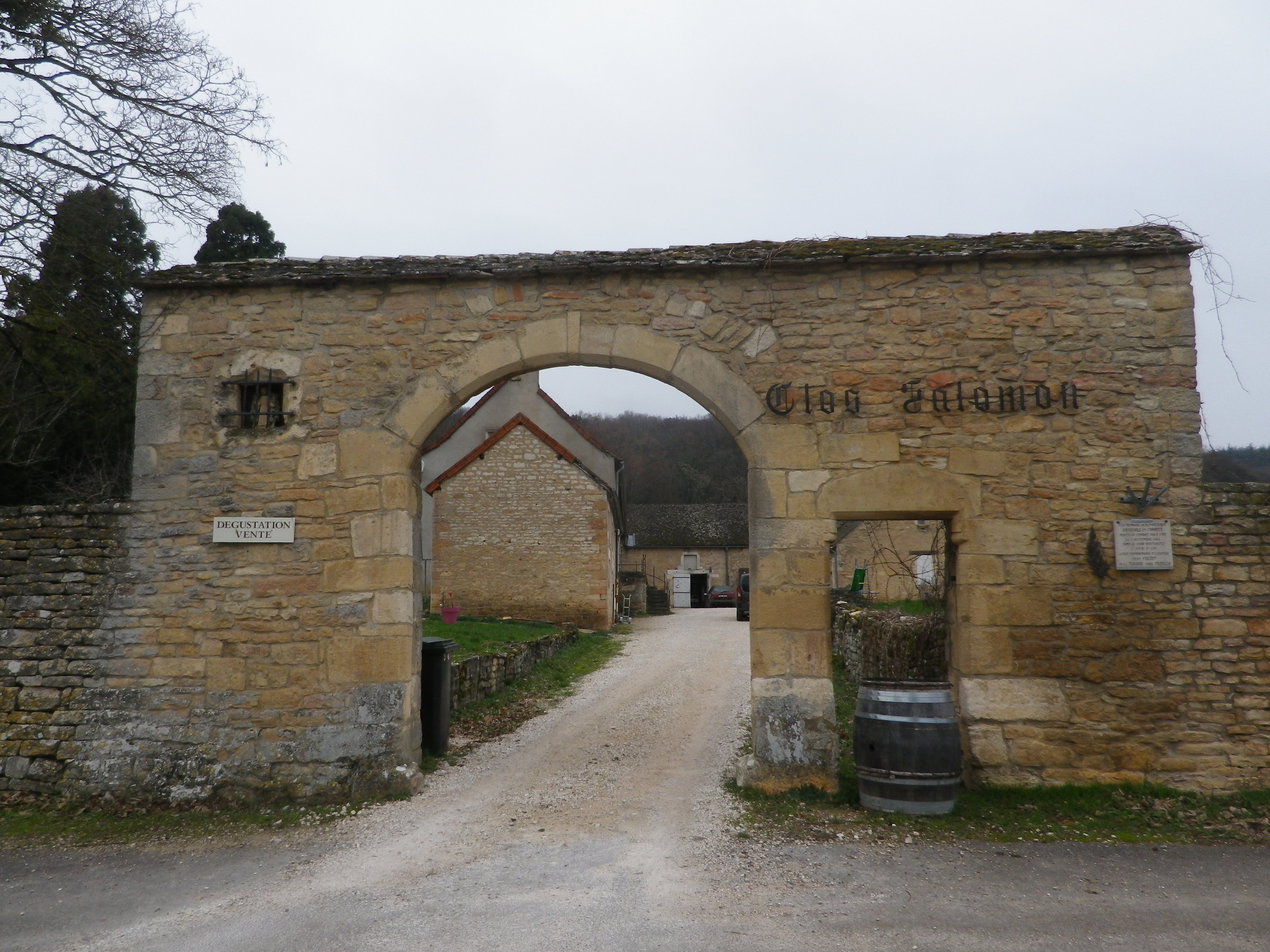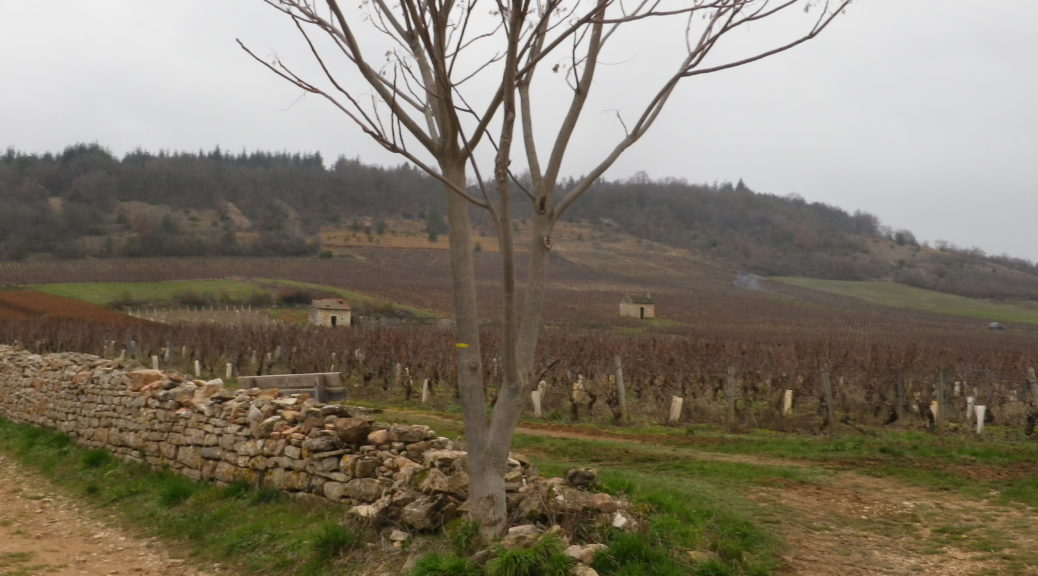If, as King Henry IV famously stated, “Paris is worth a Mass”, then he also likely said: Givry is worth a glass. It was his favorite wine. As I hiked along the trail that meandered past its clos and vineyards, and strolled along its streets, I had reason to see why.
The stroll through town showcases some of its beautiful old buildings. Erected during different eras, they are all made of the amazing limestone that is so typical of many Burgundian buildings. Once out of town and in the vineyards, clos walls are made of the same material, albeit in January covered by moss and lichen in a colorful winter coat.
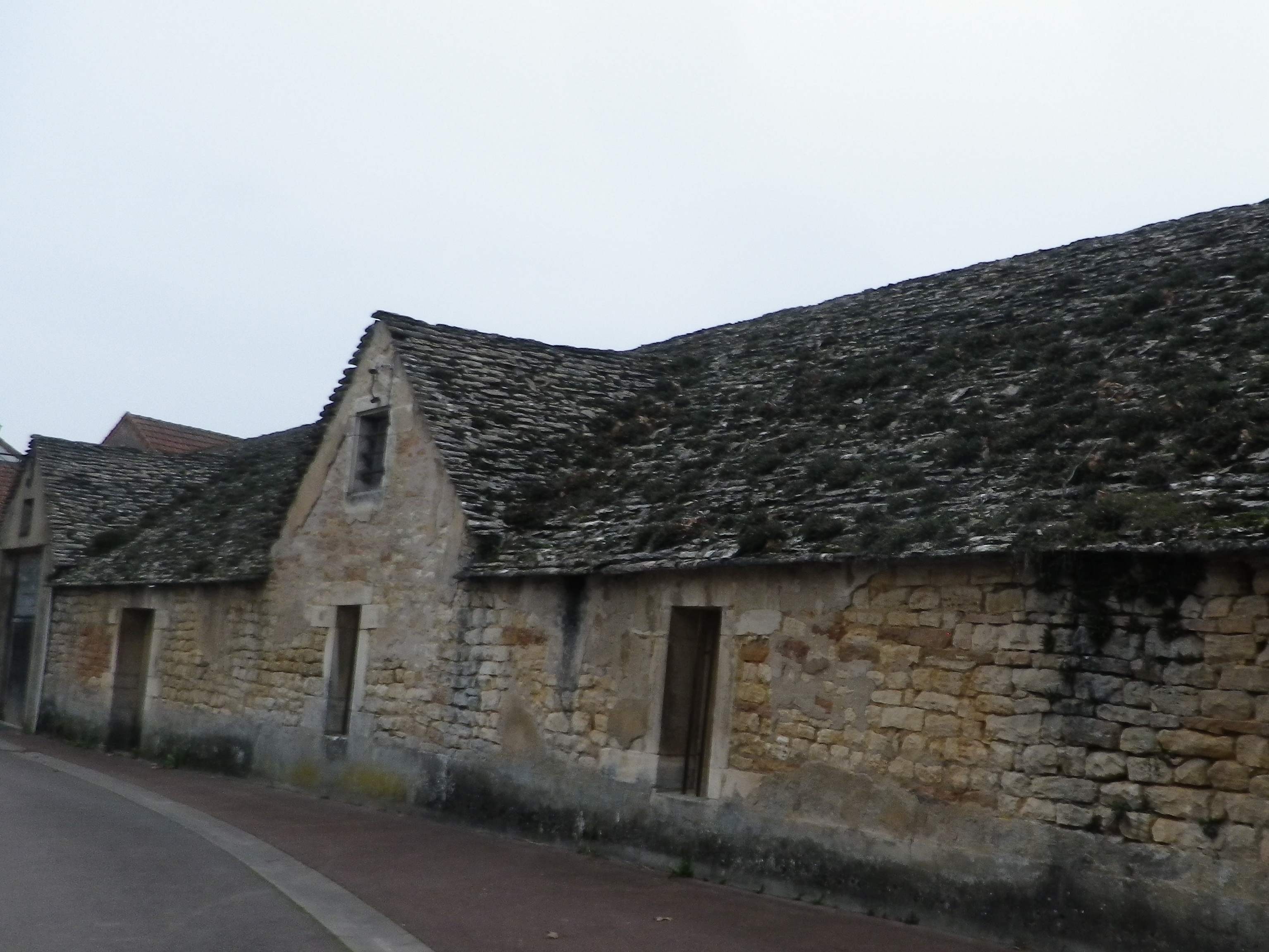
The trail through the woods, accessed by a somewhat steep climb, is a change of pace. Here, the limestone appears in natural form. On top, the vines disappear, and the woods are surrounded by a special kind of field, Chaumes, in French. These are fields of stubbly sedge land, characterized by grasses and other plants that are lime-tolerant. In winter, minus most of its color or new growth, it looked like a human habitat abandoned over time. The soil that is so beneficial for vines is poor soil indeed for most other crops. Instead, these areas can be good for grazing sheep and goats.
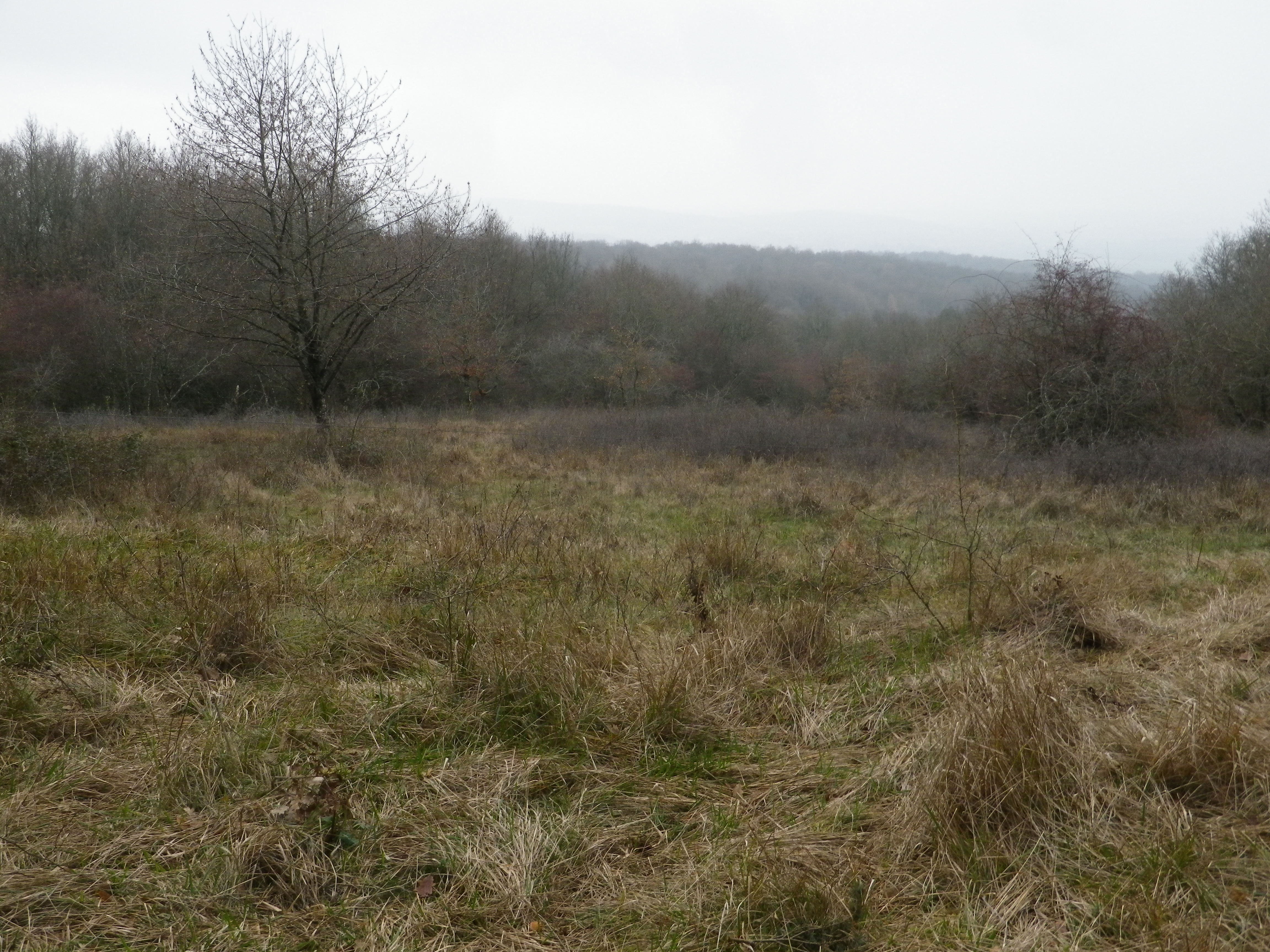
After following the trail through a pasture, I arrived in the hamlet of Russilly. Seemingly just as deserted as the Chaumes above, it was eerily still as I walked along its lanes. Houses lie low, seemingly half-buried in, or half-risen from, the rocky earth. Ironically, only the cemetery by the church showed any sign of life, with fresh flowers on one grave, and a custodian cleaning the church, made of limestone limned by time and life itself.
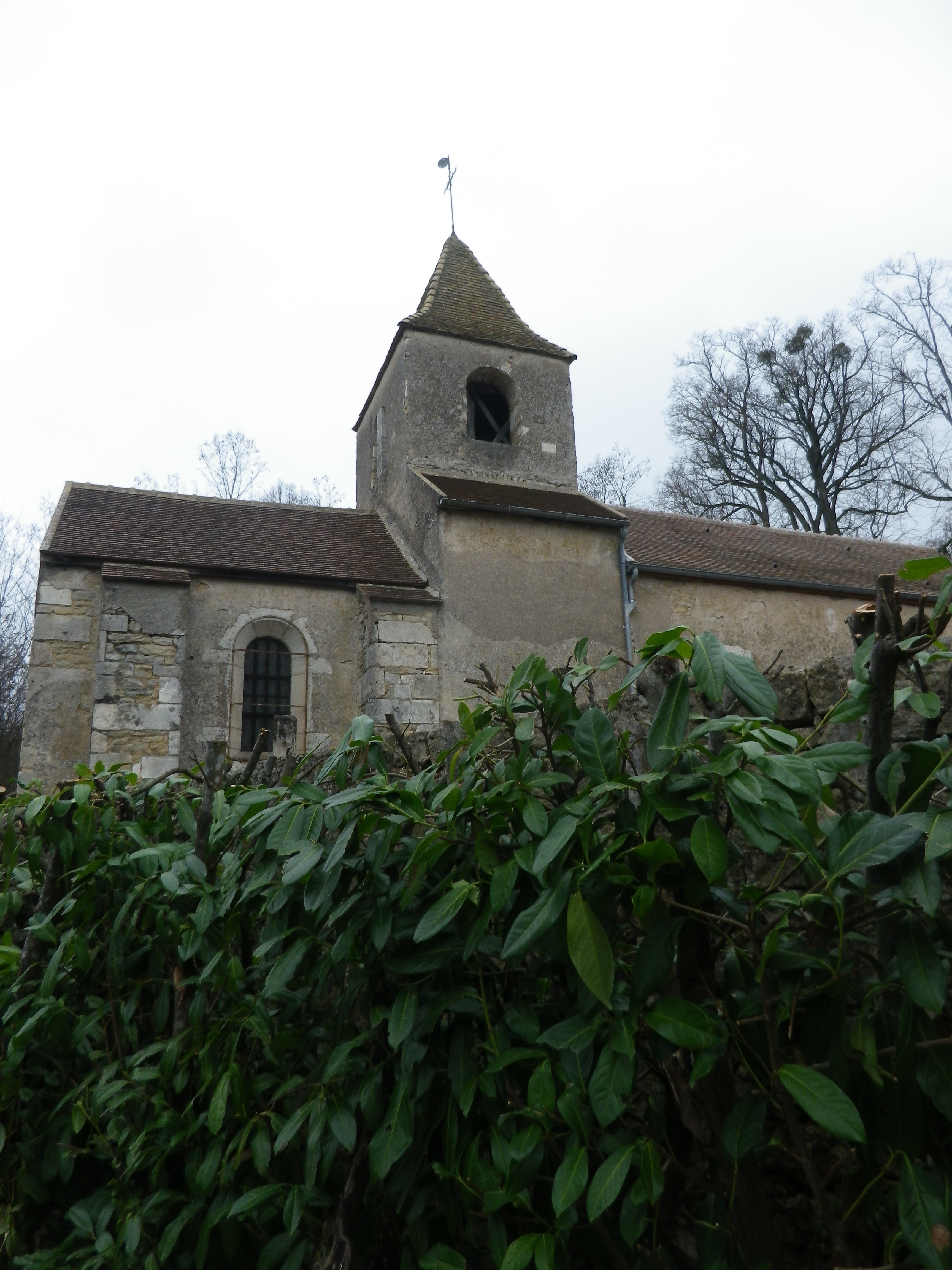
Just as interesting in a different way was the hamlet of Charnailles. While it was just as quiet, tall castle towers marked my entry into the hamlet. The Chateau de Charnailles dates to the 15th century, but obviously has been much reworked. Its towers stood high above all other buildings, including the modern, and well-known Michel Sarrazin winery (sadly closed). But at the other edge of town, a competing tower appeared. This one assumed the form of a simple but picturesque windmill, called Moulin de la Chaume Renache.
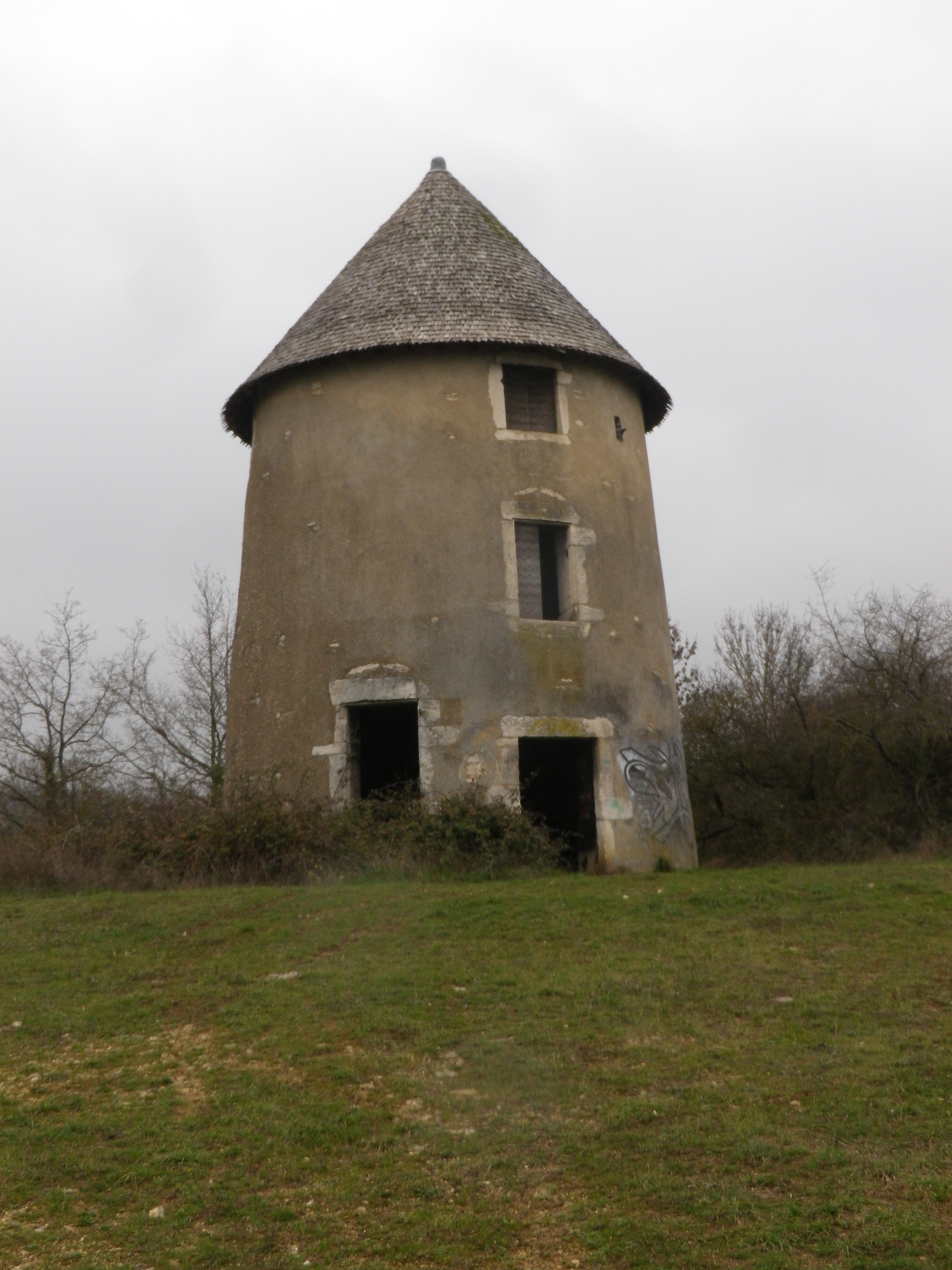
From here, with better weather, Givry and much of the valley of the Saone would have been visible. Chalon-sur-Saone is only about 10 kilometers away. Directly in front however, beyond the sedges crowning the mill’s hilltop, were kilometers of vineyards, stretching south, east and west.
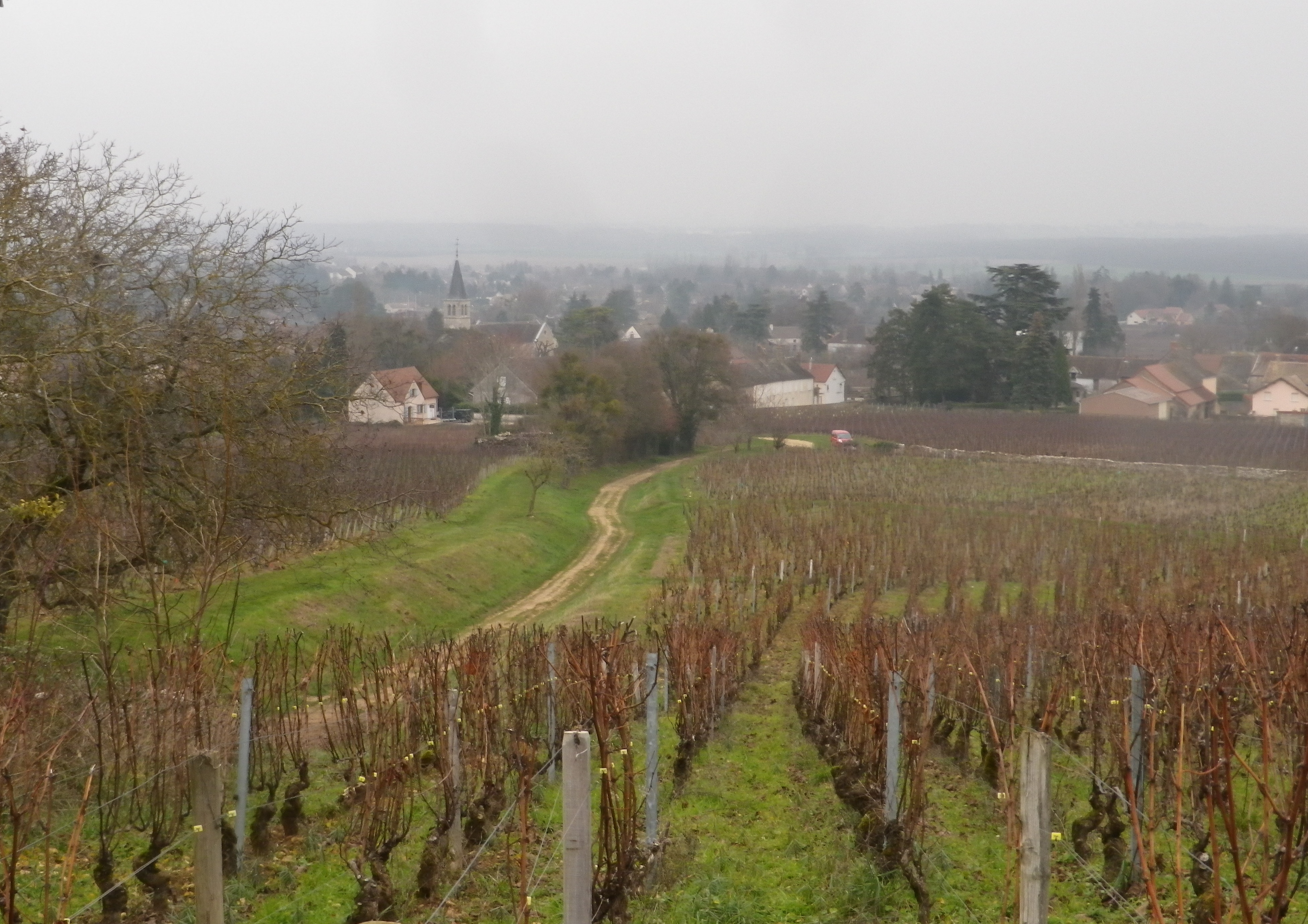
In Cortiambles, part of the township of Givry, there was one of the most famous vineyards: The Clos Salomon. This estate has been around since even before Henry IV. Its vineyards are classified as a Givry Premier Cru. Here, my discovery of Givry wines affirmed Henry’s predilection for them. As luck would have it, the Domaine was open, and the winemaker was in! As the weather closed in, and a driving rain began, I was fortunately inside, listening to the winemaker explain his processes, and sampling the wines. What wonderful glasses of Givry wine, and what a fantastic way to end the trail!
